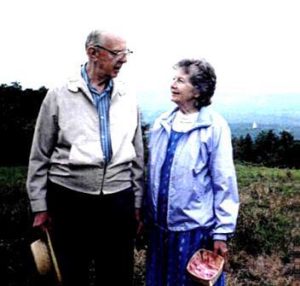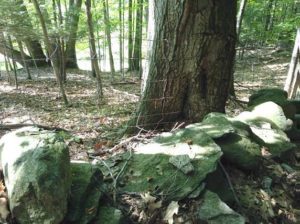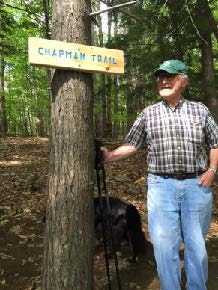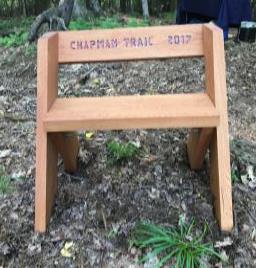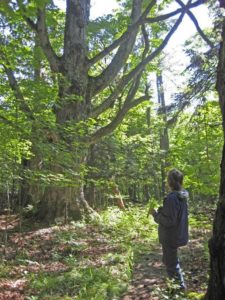Although hunting for various species occurs throughout the year, deer season is by far the most popular. In New Hampshire, the full season runs from September 15 – December 15 each year.
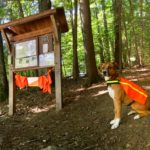
Remember to wear your blaze orange or hi-vis yellow and take precautions with dogs and kids: bells and bright colors are always a good choice!
Loaner safety vests and bandanas are available at many of our trailheads. Please return them after your hike!




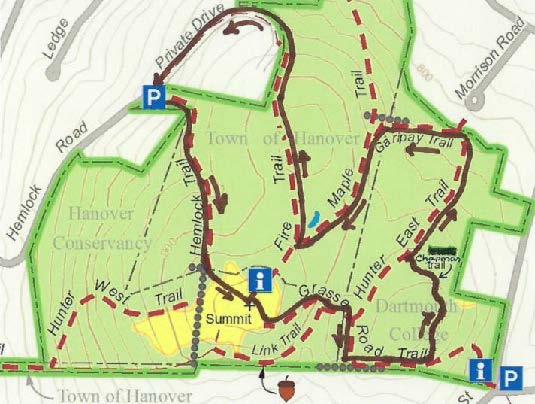
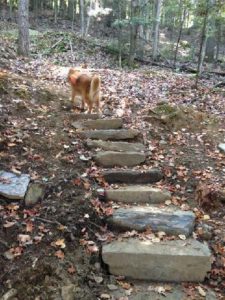
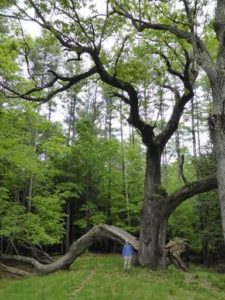
 The bench honors one of Balch Hill’s most important benefactors, Ralph Hunter. Ralph, who took this photo of a young family skiing here in 1965, lived nearby and developed 7 building lots on Hemlock Rd. In 1970 he was instrumental in helping the Hanover Conservancy (then known as the Hanover Conservation Council) acquire 6.26 acres at the summit, donating some of his own land to bring it to 10.3 acres. Then in 2001, Ralph and his wife Betty (below) donated another 10 acres to the Council, protecting the W side of the hill.
The bench honors one of Balch Hill’s most important benefactors, Ralph Hunter. Ralph, who took this photo of a young family skiing here in 1965, lived nearby and developed 7 building lots on Hemlock Rd. In 1970 he was instrumental in helping the Hanover Conservancy (then known as the Hanover Conservation Council) acquire 6.26 acres at the summit, donating some of his own land to bring it to 10.3 acres. Then in 2001, Ralph and his wife Betty (below) donated another 10 acres to the Council, protecting the W side of the hill.